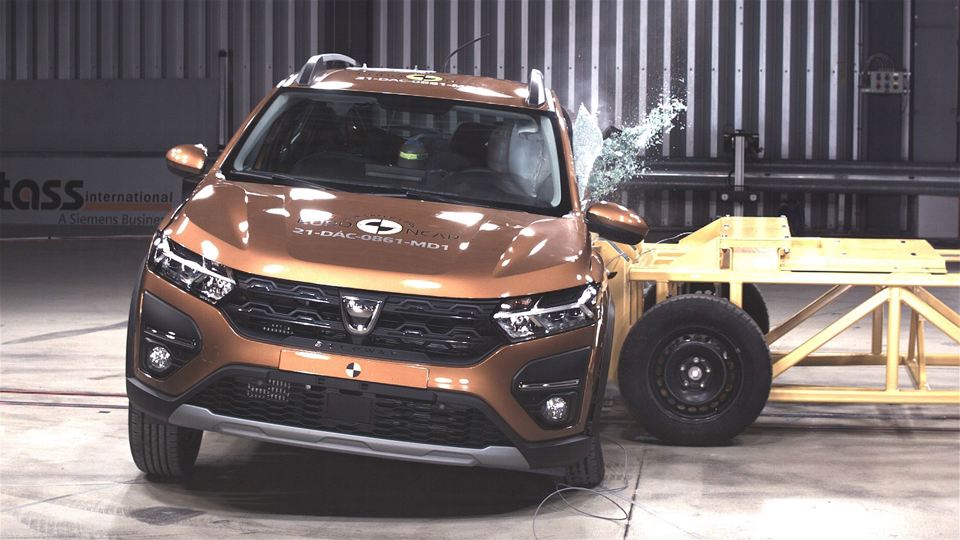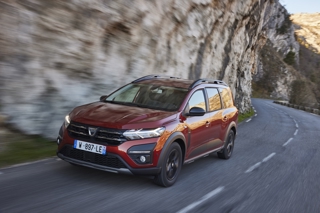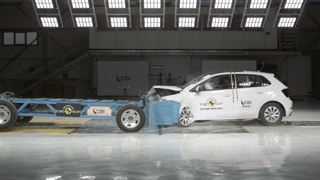Euro NCAP has given the new Dacia Jogger a one-star safety score in its latest round of testing.
The new seven-seat model, which is one of the cheapest new cars on sale in the UK, was marked down by Euro NCAP for lacking basic safety features which are the norm in most family cars.
Matthew Avery, chief research strategy officer at Thatcham Research, said: “For a family car this safety performance is disappointing. The vehicle may be more affordable than others in the same category, but in terms of safety it appears that you do get what you pay for.
“In this case, not only is the Dacia Jogger lacking the active safety features that buyers expect as standard, but even some of its basic passive safety features are not up to the industry standard set by the vast majority of carmakers.”
Euro NCAP assessments look at two main areas of safety during testing: ‘passive’ and ‘active’. Passive safety features include airbags, seatbelts, and crumple zones with a view to securing occupants and mitigating damage during an accident. Whereas active safety features are designed to help prevent accidents from happening in the first place, via the fitment of technology such as Autonomous Emergency Breaking (AEB) to detect vehicles and vulnerable road users, lane departure warnings and blind spot information.
The Jogger’s results show that protection for the chest on the 10-year-old dummy was ‘weak’ and protection for front seat passengers in a collision was rated as ‘marginal’ or ‘adequate’, due to a sub-optimal seatbelt restraint. The Jogger was also penalised across many of the same categories as its partner model, the Sandero Stepway, for example its AEB system can only detect other vehicles.
Although the Sandero Stepway is a two-star rated vehicle, the Jogger was awarded just one-star due to there being no increase in the provision of safety measures for rear-seated passengers in tandem with its increased capacity. There are no seat belt reminders for the new rear row of seats for drivers to ensure that children are appropriately buckled-up, while the side-curtain airbag does not extend far enough back to provide protection for those seated in the rear row, meaning they are far more vulnerable in the event of a side impact.
The DS 4, meawhile, achieves a four-star rating in standard form but five stars when equipped with optional safety equipment. Honda’s third-generation HR-V is also awarded a four-star rating.
The new DS 4 comes equipped with an active bonnet for pedestrian protection and a new centre airbag located between driver and front passenger. The standard camera-only autonomous emergency braking system, however, underwhelmed in the track tests simulating accidents with other vehicles, such as rear-end crashes, resulting in a four star rating overall. To get a performance that is more comparable to its rivals in the segment, consumers must purchase the optional ‘Safety Pack Plus’ that adds a radar sensor. The increased performance of this fusion system is enough to lift the car into five-star territory.
The latest generation, hybrid-only Honda HR-V is an all-round performer but the restraint performance in crash tests, in particular for children seated in the rear, was not as robust as expected. This dropped its score in this part of the assessment into the four-star band.























Login to comment
Comments
No comments have been made yet.